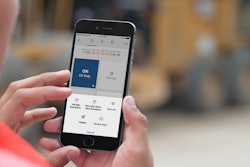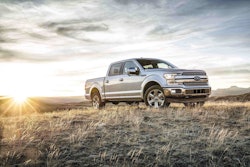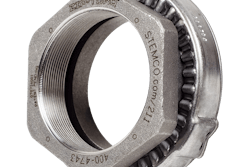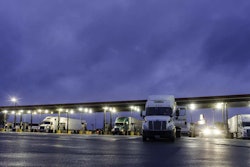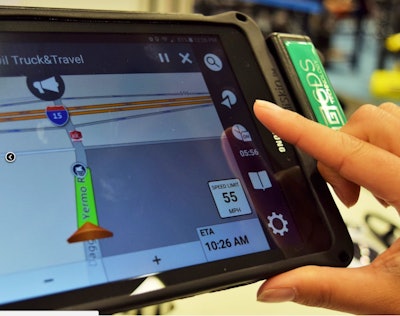
Note: This is the first of the three part series that looks ahead at the future of trucking. Subsequent articles will publish throughout the week.
Autonomy is a big word in the future of trucking discussion, but a bigger word looms over the industry as the shift toward driverless vehicles takes place: connectivity.
Sandeep Kar, chief strategy officer at Fleet Complete, a global commercial vehicle telematics and Internet of Things firm, says a truck will never be fully able to drive itself without the ability to connect and communicate with its environment.
“Connected truck means a truck connected to the truck outside,” he says. “All kinds of telematics technologies.”
Currently, two of the most prominent trends in trucking are electric mobility and the connected truck, and Kar says each will have an impact on autonomy. He says powertrain electrification and autonomy are mutually independent but will have overlap areas where they will converge in the future.
“If we’re stuck in a fossil fuel world in the next decade, we’ll continue to see great advances in the connected truck,” Drivewyze Chief Operating Officer Leo Jolicoeur says. “The industry is not waiting.”
Connected to the outside world
Today’s driver information displays offer an array of helpful information to the driver and remote diagnostics help funnel that data back to a fleet’s maintenance department. However, Kar says drivers and fleets of the future will be only a small part of the truck’s communication loop.
“The world outside needs to know what is the status of the battery … The battery needs to know where is the nearest charging station, or how can it increase its range,” he says. “That is what some of the connected technology would help is that ensuring that the battery and the powertrain systems are in optimal shape and form.”
Such a leap in communication would be a shift from what is currently being shared.
“I think we’re at a stage right now where it’s about communicating between trucks, truck drivers and state infrastructure on safety information,” he says.
Drivewize is currently deploying in Beta-form a project that gathers information from all states about their high-crash locations and high-crash zones with that information being relayed to drivers as they approach those locations – Drivewize’s push toward the truck being able to talk to its surroundings.
When a truck is able to communicate with the world around it, Kar says the environment will help drive vehicle optimization. For example, if a prognostic maintenance platform indicated an imminent breakdown, that truck could be prioritized in order to avoid extended downtime.
“All those prognostic characteristics will be captured by connected truck technologies,” Kar says. “If it’s an electric vehicle, it might get preferential lane treatment, for example, or a preferential parking spot or preferential lanes … What’s going to make those decisions in the future will be the connected truck and technology.”
Prognostic capabilities still have hills to climb. Currently, Kar says the issue with prognostics is that there are only two smart systems on the truck that provide the ability to predict failure: tire pressure monitoring and engine control modules (ECM).
“[TPMS] can tell you if a tire is not running at optimal pressure and it may rupture or lose further pressure,” he says. “The engine ECM can tell you a lot about an engine’s future. Pretty much the rest of the truck is like a dead zone.”
The future, Kar says, is to make every system in the truck smarter.
“If a system becomes smart, all of these systems can fall under prognostics, which would bring downtime to minimal,” he says. “Systems are already in place. What you need is to make them smarter. How you make them smarter is to add electronic interfaces to enable communication of the vehicle itself with the world outside.”
Adding more sensors on a truck already rich with them won’t be popular with drivers and technicians already weary of dashboard indicators, but Kar says the next generation of sensors won’t simply indicate a problem. They will help the truck determine its own course of corrective action.
“That’s why the whole idea is to add electronic sensors and smart devices to these systems. It’s not just about adding a microchip so the system can talk,” he says. “It’s about offering information and data to other systems in the vehicle, which can aggregate it so a decision can be made by the vehicle itself without requiring human input.”
“What we’re seeing is not necessarily a revolution, but an evolution in the deployment of really wonderful safety-based and productivity-based solutions into trucking,” Jolicoeur adds.




